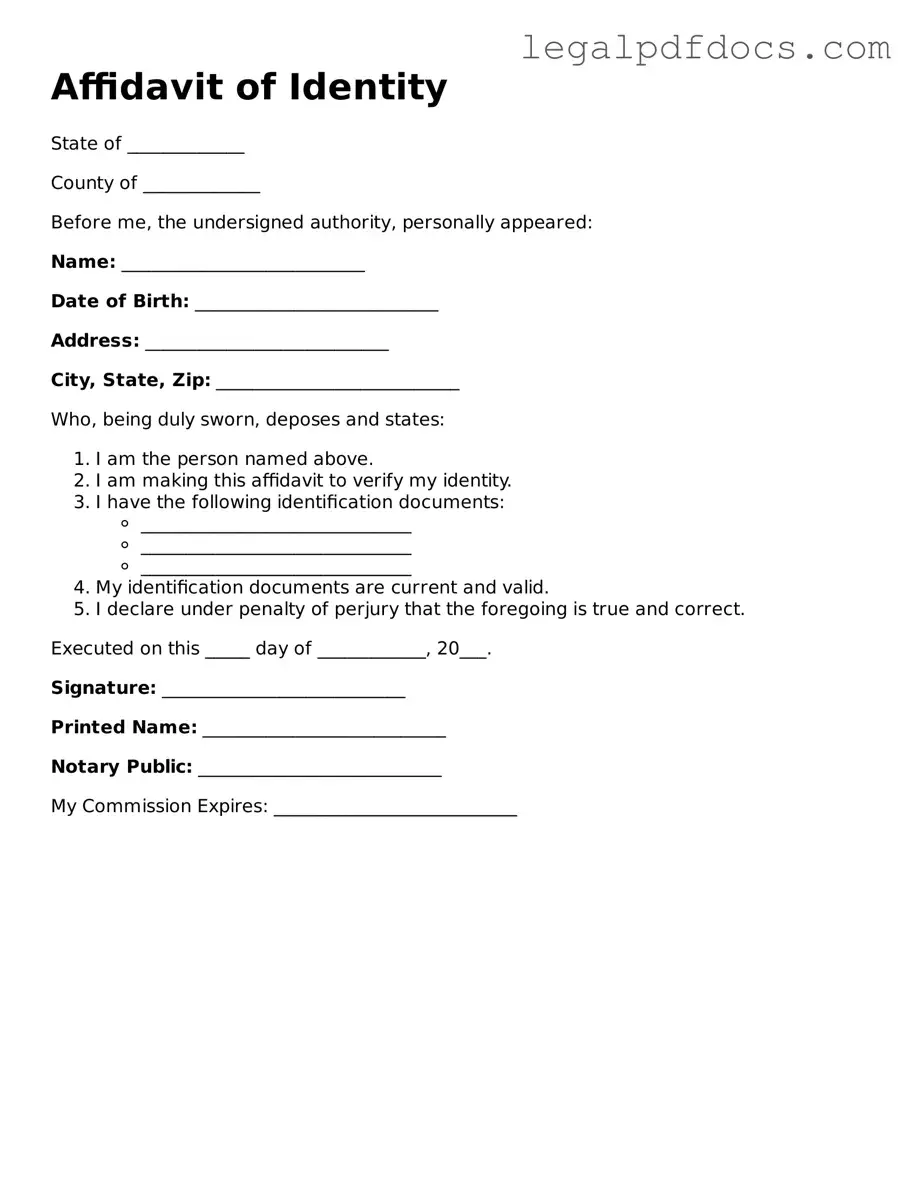The Affidavit of Identity form serves as a crucial document in various legal and administrative processes, enabling individuals to affirm their identity when official records or identification are in question. Often utilized in situations such as name changes, identity theft claims, or when a person lacks standard identification, this form allows individuals to provide a sworn statement regarding their identity. Typically, it requires the signer to include personal details such as their full name, address, date of birth, and any other relevant identifiers. Additionally, the form may need to be notarized, adding a layer of authenticity and legal weight to the declaration. By completing this affidavit, individuals can help ensure that their identity is recognized and protected in legal matters, facilitating smoother interactions with government agencies, financial institutions, and other entities that require proof of identity.
